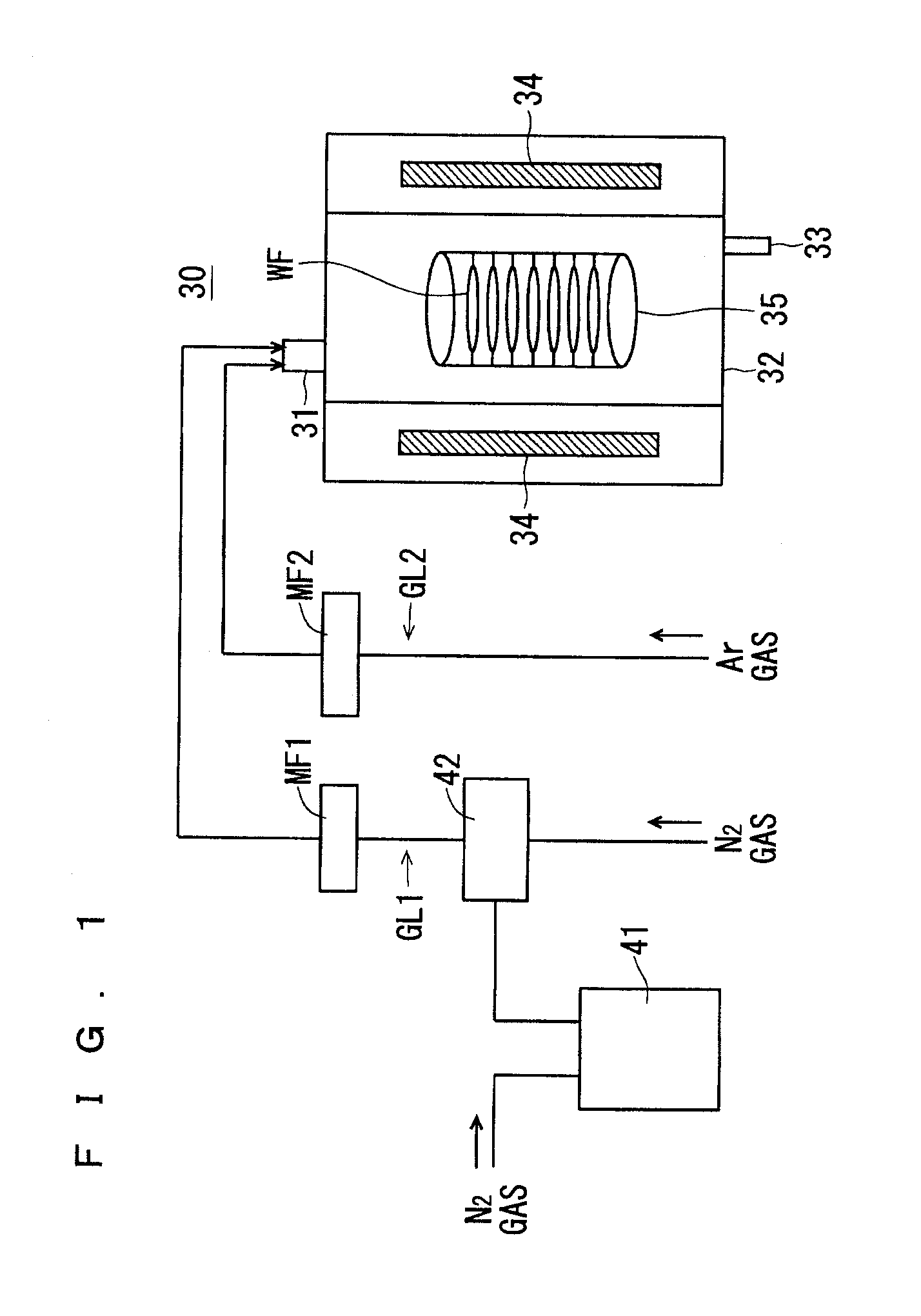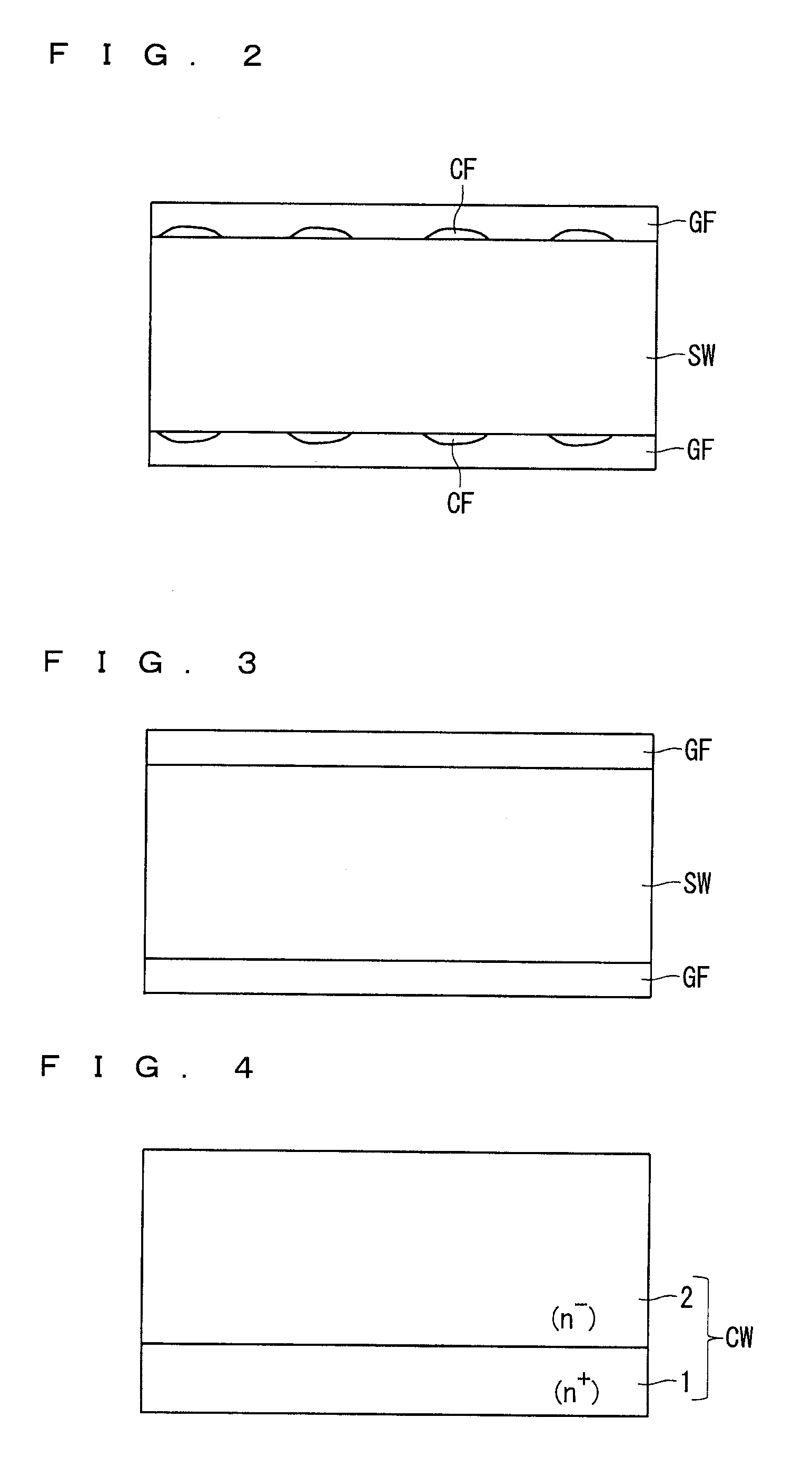Method of manufacturing silicon carbide semiconductor device
a semiconductor device and silicon carbide technology, applied in the direction of individual semiconductor device testing, semiconductor/solid-state device testing/measurement, instruments, etc., can solve the problems of preventing or reducing the step bunching, adhesion and leakage characteristics may deteriorate, and surface roughness called step bunching on the surface of silicon carbide wafers, etc., to prevent or reduce the step bunching, the effect of preventing the evaporation of silicon and high accuracy
- Summary
- Abstract
- Description
- Claims
- Application Information
AI Technical Summary
Benefits of technology
Problems solved by technology
Method used
Image
Examples
embodiment 1
Preferred Embodiment 1
[0026]In the present status, a silicon carbide wafer is very expensive, and therefore from the viewpoint of avoiding the use of silicon carbide wafer as a film thickness monitor for a protective film, the present inventors have reached the technical idea of using a silicon wafer instead of a silicon carbide wafer, as a film thickness monitor.
[0027]FIG. 1 shows an outline of a film forming device for forming a graphite film which serves as a protective film on a silicon carbide wafer. Here, it is assumed that the graphite film is formed (deposited) by a chemical vapor deposition (CVD), and a configuration of a CVD device 30 which is a typical film forming device is shown.
[0028]As shown in FIG. 1, the CVD device 30 includes a gas introduction part 31, a film forming furnace 32, a gas discharge part 33, a heater 34, and a substrate holder 35. The gas introduction part 31 is for the introduction of a source gas or the like which is used to form a graphite film. The...
embodiment 2
Preferred Embodiment 2
[0043]A method of manufacturing a silicon carbide semiconductor device according to a preferred embodiment 2 of the present invention will be described with reference to FIGS. 4 to 8.
[0044]FIGS. 4 to 6 are diagrams sequentially showing manufacturing steps of a power MOSFET (Power Metal Oxide Semiconductor Field Effect Transistor), up to a step of forming a graphite film.
[0045]Here, the term “MOS” was formerly used to express a layered structure of metal-oxide-semiconductor, and is supposed to be named after the initial letters of Metal-Oxide-Semiconductor. However, particularly in a field effect transistor (hereinafter simply referred to as a “MOS transistor”) having a MOS structure, materials of a gate insulating film and a gate electrode have been improved from the viewpoint of the recent integrations and improvement in the manufacturing process.
[0046]For example, in a MOS transistor, mainly from the viewpoint of the source and drain being formed in a self-al...
PUM
| Property | Measurement | Unit |
|---|---|---|
| Temperature | aaaaa | aaaaa |
| Temperature | aaaaa | aaaaa |
| Temperature | aaaaa | aaaaa |
Abstract
Description
Claims
Application Information
 Login to View More
Login to View More - R&D
- Intellectual Property
- Life Sciences
- Materials
- Tech Scout
- Unparalleled Data Quality
- Higher Quality Content
- 60% Fewer Hallucinations
Browse by: Latest US Patents, China's latest patents, Technical Efficacy Thesaurus, Application Domain, Technology Topic, Popular Technical Reports.
© 2025 PatSnap. All rights reserved.Legal|Privacy policy|Modern Slavery Act Transparency Statement|Sitemap|About US| Contact US: help@patsnap.com



